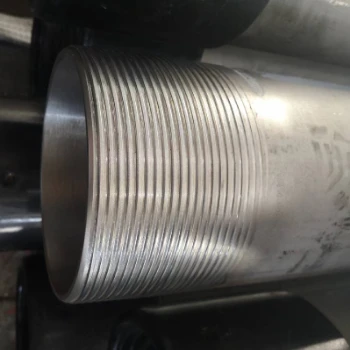- Afrikaans
- Albanian
- Amharic
- Arabic
- Armenian
- Azerbaijani
- Basque
- Belarusian
- Bengali
- Bosnian
- Bulgarian
- Catalan
- Cebuano
- Corsican
- Croatian
- Czech
- Danish
- Dutch
- English
- Esperanto
- Estonian
- Finnish
- French
- Frisian
- Galician
- Georgian
- German
- Greek
- Gujarati
- Haitian Creole
- hausa
- hawaiian
- Hebrew
- Hindi
- Miao
- Hungarian
- Icelandic
- igbo
- Indonesian
- irish
- Italian
- Japanese
- Javanese
- Kannada
- kazakh
- Khmer
- Rwandese
- Korean
- Kurdish
- Kyrgyz
- Lao
- Latin
- Latvian
- Lithuanian
- Luxembourgish
- Macedonian
- Malgashi
- Malay
- Malayalam
- Maltese
- Maori
- Marathi
- Mongolian
- Myanmar
- Nepali
- Norwegian
- Norwegian
- Occitan
- Pashto
- Persian
- Polish
- Portuguese
- Punjabi
- Romanian
- Russian
- Samoan
- Scottish Gaelic
- Serbian
- Sesotho
- Shona
- Sindhi
- Sinhala
- Slovak
- Slovenian
- Somali
- Spanish
- Sundanese
- Swahili
- Swedish
- Tagalog
- Tajik
- Tamil
- Tatar
- Telugu
- Thai
- Turkish
- Turkmen
- Ukrainian
- Urdu
- Uighur
- Uzbek
- Vietnamese
- Welsh
- Bantu
- Yiddish
- Yoruba
- Zulu
well casing coupling
Understanding Well Casing Couplings An Integral Component in Oil and Gas Drilling
In the oil and gas industry, the integrity and efficiency of drilling operations heavily rely on various components, among which well casing couplings play a pivotal role. These specialized fittings are essential in connecting sections of casings, ensuring the wellbore's stability and preventing the intrusion of unwanted materials during drilling operations.
What is Well Casing?
Well casing is a series of tubes installed in a newly drilled well to prevent the walls of the well from collapsing and to protect ground water from contamination. The primary purpose of the casing is to provide structural integrity to the borehole and to facilitate the efficient extraction of oil, gas, or water. Casing is typically made from steel or other durable materials that can withstand high pressures and harsh environments encountered in underground formations.
Role of Casing Couplings
Casing couplings are essential components that connect individual casing pipes. These couplings not only join the pipes but also ensure that the overall system maintains its pressure integrity and functionality. They act as a mechanical link, distributing loads evenly across the connected sections and ensuring the well's structural integrity throughout its lifecycle.
Given the challenging conditions in which they operate, well casing couplings are designed with specific attributes that make them suitable for various drilling environments. They are engineered to withstand high pressures, extreme temperatures, and corrosive substances often found in hydrocarbon reservoirs.
Types of Casing Couplings
Casing couplings are categorized based on their design and the specific application for which they are intended. The most common types include
1. Pin and Box Couplings This traditional design features a male (pin) end that connects to a female (box) end. This design provides a secure mechanical connection and ensures proper alignment between casing sections.
well casing coupling

2. Threaded Couplings These fittings have threaded ends that allow for easy connection and disconnection of casing sections. The threading ensures a tight seal, which is crucial for preventing leaks during high-pressure operations.
3. Welded Couplings In some cases, casing sections are welded together using specialized techniques. Welded couplings provide enhanced strength and pressure resistance, making them ideal for high-stress applications.
4. Specialty Couplings These are designed for unique applications, such as withstanding specific environmental conditions or accommodating specific drilling techniques. Specialty couplings may include features like corrosion-resistant coatings or additional internal supports.
Importance of Material Selection
The selection of materials for casing couplings is critical to their performance. Common materials include carbon steel, alloy steel, and, in some instances, non-metallic materials that offer resistance to corrosion. The choice of material depends on factors such as the well's expected pressure and temperature, the type of fluids encountered, and the geological characteristics of the drilling site.
Installation and Maintenance
The installation process for casing couplings must be executed with precision to guarantee proper alignment and sealing. Misalignment can lead to structural weaknesses and potential failure during drilling operations. Furthermore, regular inspection and maintenance are necessary to identify wear and tear, corrosion, or other issues that could compromise the integrity of the wellbore.
Conclusion
Well casing couplings are crucial to the success and safety of drilling operations in the oil and gas industry. Their ability to connect casing sections securely and reliably is paramount in ensuring the overall stability of the wellbore. As drilling technologies continue to advance, the design and materials used in casing couplings will likely evolve, further enhancing their effectiveness and reliability. Understanding the function and importance of these components is essential for professionals in the field, as they play a significant role in the sustainable extraction of natural resources while minimizing environmental impact.
-
Tubing Pup Joints: Essential Components for Oil and Gas OperationsNewsJul.10,2025
-
Pup Joints: Essential Components for Reliable Drilling OperationsNewsJul.10,2025
-
Pipe Couplings: Connecting Your World EfficientlyNewsJul.10,2025
-
Mastering Oilfield Operations with Quality Tubing and CasingNewsJul.10,2025
-
High-Quality Casing Couplings for Every NeedNewsJul.10,2025
-
Boost Your Drilling Efficiency with Premium Crossover Tools & Seating NipplesNewsJul.10,2025







